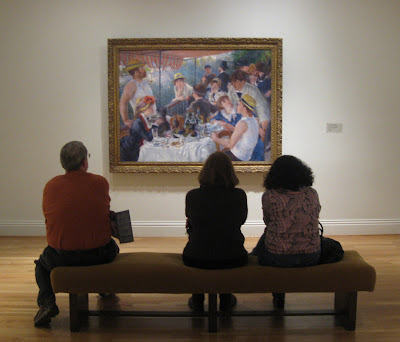

The Spring auctions are around the corner, and after looking at Sotheby's beautiful new e-catalogue online tonight (check out the "relative scale" feature which completely blew me away), I am thrilled to report that it looks absolutely amazing, especially compared to the tentative and uneasy Fall offerings. What a selection, including a large-scale Jean Michel Basquiat (Lot #23: Red Man One, $3,000,000 - 5,000,000), a wonderful witty Richard Price joke painting (Lot #35: Can You Imagine, $600,000 - 800,000), and a 1986 Warhol camouflage painting (Lot #39: Camouflage, $1,800,000 - 2,500,000) that we rarely see in an evening sale. These late paintings are among my favorite of Warhol's work, because the series also included images of Leonardo Da Vinci's famous painting of the Last Supper, thereby taking a turn into the realm of religious art. They were joyfully documented by one of my thesis advisers and author, Jane Dillenberger, during the time I was studying with her. What an amazing way to discover and learn to appreciate this late period of Warhol's work.
The artworks shown pictured above are spectacular. Jeff Koons' sculpture (Lot #9: Baroque Egg with Bow, $600,000,000 - 800,000,000) is from his Celebration series, which (like Warhol's entire oeuvre) took images from our every-day life and exhalted them to high art. Here, the familiar and nostalgic Easter egg becomes a hyper-realistic, perfectly crafted, intellectually satisfying sculpture. The monumental scale and artistic precision (thanks to a factory of workers, again, like Warhol) make it even more enticing - and best seen in person. Martin Kippenberger's painting (Lot #7: Untitled, $3,500,000 - 4,500,000) is new to me, but I like him immediately. This self-portrait brings to mind the harsh, unforgiving paintings of Lucian Freud. According to the catalogue notes, Kippenberger was a master of self-portraiture, in which nothing was left sacred. In his later paintings, of which this is the best example, his self-mocking depiction of his aging body was offered up to the viewers as a stark contrast to his hero, Picasso, the ultimate master of the self-portrait.
The price points for the Koons and Kippenberger, as well as the inclusion of several Twombly drawings, a Bill Viola video and a Jeff Wall lightbox, make this particular auction pretty exciting and diverse.
















